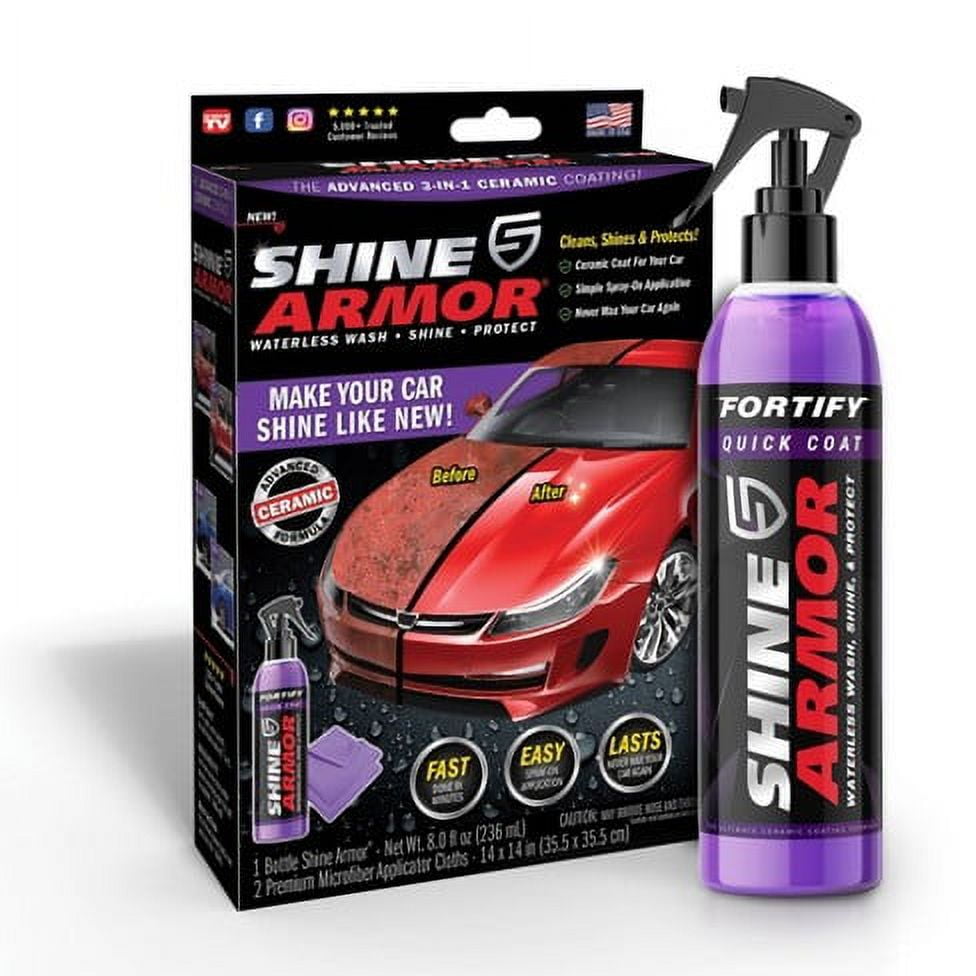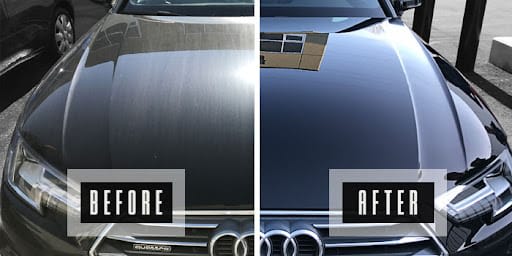The Science Behind Ceramic Covering: Just How It Enhances Your Lorry's Visual and Resilience

Recognizing Ceramic Layer Chemistry
The chemical composition of ceramic coverings plays a crucial role in determining their resilience and protective residential or commercial properties on vehicle surface areas. Ceramic layers are commonly composed of silicon dioxide (SiO2), which is a key part supplying hardness and heat resistance. Various other active ingredients such as titanium dioxide, silicon carbide, and polysilazanes are commonly included in improve particular residential properties like UV hydrophobicity, bond, and resistance.
Silicon dioxide, likewise referred to as silica, forms a solid and transparent layer on the lorry surface when used appropriately. This layer serves as a guard, securing the paint from ecological pollutants, UV rays, oxidation, and chemical spots. Titanium dioxide helps in obstructing hazardous UV rays that can cause paint fading and deterioration. Silicon carbide is understood for its abrasion resistance, making the ceramic coating hard and durable against physical damage. Polysilazanes are utilized to boost the finishing's adaptability and attachment to the vehicle's surface, making certain lasting security. Comprehending the chemistry behind ceramic layers is essential for both applicators and automobile proprietors to appreciate the value and benefits these finishes provide in preserving the visual allure and longevity of cars.
Enhanced Gloss and Mirror-like Finish
Comprehending the chemical make-up of ceramic coverings not just reveals their protective residential or commercial properties yet additionally drops light on just how they contribute to attaining an enhanced gloss and mirror-like surface on vehicle surface areas - ceramic pro. In addition, the chemical structure of ceramic finishes allows them to create a solid bond with the lorry's paintwork, stopping oxidation and keeping the clarity of the finish over time. The combination of filling up residential or commercial properties, light reflection, and lasting security makes ceramic layers a popular option for those looking for a mirror-like and vivid coating for their lorries.

Influence on Paint Protection and Longevity
Ceramic layers for vehicles considerably improve the durability and security of the paintwork. By developing a chemically resistant layer on top of the automobile's clear layer, ceramic coatings act as a barrier versus numerous environmental impurities that can damage the paint with time. These coverings are created to drive away dust, water, road salt, bird droppings, and other harmful materials, lowering the danger of paint oxidation and deterioration. Furthermore, the hardness of ceramic finishes offers a degree of scrape resistance, assisting to keep the vehicle's appearance for an extended duration.
In regards to durability, ceramic finishes use a resilient remedy contrasted to standard waxes or sealants. While waxes may last a few weeks to a couple of months, ceramic finishings can last years with appropriate upkeep. This extended life expectancy not just decreases the frequency of reapplications yet also saves time and initiative in the long run. In general, the safety residential or commercial properties of ceramic coverings add considerably to protecting the vehicle's paintwork and improving its visual appeal over an extensive duration.
Resistance to Impurities and Harsh Elements
With the protective guard provided by ceramic finishes versus various ecological pollutants and aspects, lorries have the ability to preserve their excellent appearance in spite of direct exposure to rough problems. Ceramic layers create a strong obstacle that pushes back water, dirt, dust, and other typical contaminants, stopping them from bonding to the car's surface area. This hydrophobic nature not just makes cleansing much easier however also decreases the risk of water places and etching triggered by acidic pollutants. In addition, the chemical resistance of ceramic coverings helps protect the paint from bird droppings, pest splatter, tree sap, and various other destructive substances that can damage the coating with time.
In addition, ceramic finishes offer UV security, securing the vehicle's paint from the sunlight's harmful rays that can create fading and oxidation. This resistance to UV damage look here assists keep the shade intensity and luster of the paint for longer durations. By creating a resilient and durable obstacle, ceramic coatings ensure that the lorry's outside remains safeguarded against a large range of pollutants and rough elements, protecting its visual appeal and longevity.
Application Methods and Upkeep Tips
For optimum outcomes when applying ceramic finishings to cars, utilizing correct methods and adhering to advised upkeep methods are necessary. The application process of ceramic finishing needs attention to detail and accuracy. Prior to applying the ceramic layer, it is critical to completely clean and decontaminate the vehicle's surface area to make sure proper attachment. This includes washing, claying, and potentially polishing the paint to create a smooth canvas for the ceramic finishing to bond efficiently.
When using the ceramic finishing, it is advised to operate in little areas to make certain even protection and to avoid the item from drying too rapidly. Making use of applicator pads or microfiber cloths, apply the finish in a crisscross or up-and-down activity, depending upon the product's guidelines. After the coating is applied, enable it to heal for the specified time before buffing off any kind of deposit.
In regards to upkeep, normal washing with pH-neutral soaps and avoiding extreme chemicals or unpleasant devices will certainly help preserve the ceramic layer's integrity. Periodic inspections for any damage or endure the layer can also help preserve its safety residential or commercial properties in time.

Verdict
Finally, ceramic coating enhances a vehicle's visual allure and sturdiness through its chemical composition, offering a glossy finish and protecting the paint from environmental contaminants. Its resistance to severe aspects and simplicity of maintenance make it a popular choice for car proprietors looking to protect the appearance of their cars. Overall, ceramic finishing is a medically backed solution for maintaining the look and long life of your car.
Understanding the chemistry behind ceramic finishes is critical for both applicators and automobile owners to value the value and advantages these finishings provide in keeping the visual appeal and long life of cars. (ceramic This Site pro)
Recognizing the chemical structure of ceramic finishes not only reveals their safety residential or commercial properties but additionally drops light on exactly how they contribute to attaining an enhanced gloss and mirror-like coating on car surface areas. By forming a chemically immune layer on top of the vehicle's clear coat, ceramic coverings act as an obstacle against different ecological pollutants that can harm the paint over time. In general, the safety residential properties of ceramic coverings add considerably to maintaining the car's paintwork and boosting its aesthetic allure over an extended duration.
In verdict, ceramic covering improves a lorry's aesthetic appeal and longevity through its chemical go to these guys structure, providing a glossy finish and securing the paint from ecological impurities.